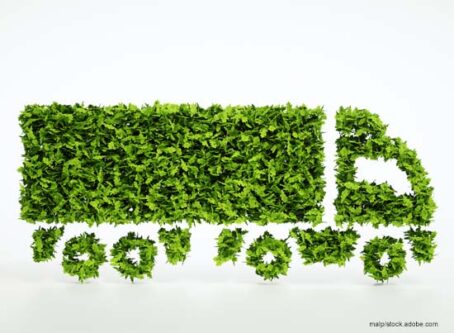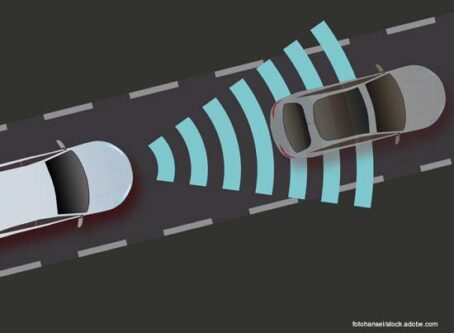NHTSA: Thousands of Level 2 autonomous vehicle crashes expected each year
The National Highway Traffic Safety Administration estimates that thousands of crashes involving Level 2 autonomous vehicles will occur each year in addition to 200 crashes involving Level 3-5 autonomous vehicles.
On Thursday, Sept. 30, NHTSA published a notice and request for comments in the Federal Register as it seeks approval to continue incident reporting for Level 2-5 autonomous vehicles. Within the 16-page notice, NHTSA explains that it expects to receive an average of 3,400 Level 2 autonomous vehicle crash reports each year. Tesla cars are considered Level 2 autonomous vehicles. The administration also anticipates about 200 Level 3-5 autonomous vehicle crash reports annually.
Specifically, NHTSA wants an extension on the already approved incident reporting. It received an emergency six-month extension in June. Now, NHTSA is going through the proper procedure for a three-year extension.
NHTSA’s incident reporting for autonomous vehicles requires certain manufacturers to submit incident reports for certain crashes involving automated systems. Currently, the program includes 108 manufacturers. NHTSA anticipates an average of 110 participating manufacturers over the next three years, including 90 Level 3-5 companies and 20 Level 2 manufacturers. Companies in the original order include Apple, Daimler Trucks North America, Embark Trucks, Navistar, Paccar, Plus AI, Tesla, TuSimple, Volvo Trucks, Waymo and every major car manufacturer.
Manufacturers must report any crash involving an automated system-equipped vehicle that results in any individual being transported to a hospital for medical treatment, a fatality, a vehicle tow-away or an air bag deployment or involves a vulnerable road user. That report must be sent within one day of the incident, with a follow-up report after 10 days. Also, companies have to report any crash involving a Level 3-5 vehicle that does not meet the above criteria but nonetheless involves personal injury or property damage.
NHTSA states that some Level 2 autonomous vehicle manufacturers are likely to submit more incident reports than others. On average, NHTSA expects each company to submit 170 crash reports each year.
According to NHTSA, information from the reports will be used “to protect the public against unreasonable risk of accidents occurring because of the design, construction or performance of a motor vehicle, and against unreasonable risk of death or injury in an accident.”
“(Level 2-5 autonomous vehicles) are new technologies that fundamentally alter the task of driving a motor vehicle,” NHTSA states in the notice. “Crashes involving vehicles equipped with these technologies have resulted in multiple fatalities and serious injuries, and NHTSA anticipates that the number of these crashes will continue to grow in the near future given the increased number of these vehicles on the road and the increased number of vehicle and equipment manufacturers in the market.”
Concerns over Tesla and other Level 2 autonomous vehicles
NHTSA’s incident reporting for autonomous vehicles comes as growing concerns of the new technologies leave many questioning their safety.
NHTSA defines Level 2 autonomous vehicles as “an advanced driver assistance system on the vehicle can itself actually control both steering and braking/accelerating simultaneously under some circumstances.” Human drivers are required to be fully attentive behind the wheel at all times and perform all other driving tasks. Tesla’s controversial Full Self-Driving system is a Level 2 technology. Currently, Level 2 is the highest level of automation commercially available in vehicles.
However, many drivers of Level 2 autonomous vehicles are behaving as if the vehicle is capable of doing more than it is designed to do. Numerous fatal crashes have occurred with Tesla vehicles while the Autopilot system was engaged. In fact, NHTSA is investigating some of those crashes.
In March, the National Transportation Safety Board issued a letter to NHTSA emphasizing the need for minimum federal standards on automated driving systems. NTSB namedrops Tesla specifically in the letter when criticizing current operations and safeguards.
Tesla has also been under fire for its phrasing. Many transportation stakeholders criticized Tesla for calling its automated system the Full Self-Driving system, claiming the name suggests that the human driver is free from all driving tasks.
In November, the Owner-Operator Independent Drivers Association sent a letter to NHTSA expressing its concerns about the technology and how it relates to the safety of small-business truckers.
“The use of unfinished and unproven automated technologies poses a significant threat to small-business truckers, and we urge you to take action to protect all road users and promote greater transparency and oversight of their development,” OOIDA President Todd Spencer states in the letter.
Level 3 is defined as “an automated driving system on the vehicle can itself perform all aspects of the driving task under some circumstances. In those circumstances, the human driver must be ready to take back control at any time when the (automated driving system) requests the human driver to do so.” Those circumstances are likely to be highway-only miles or congested traffic assuming no inclement weather.
There are no Level 3 autonomous vehicles available in the United States. The Audi A8 was supposed to be the first Level 3 vehicle. However, Audi failed to clear regulatory hurdles, putting Level 3 in the backseat for now. In March, Honda’s Legend became the first Level 3 autonomous vehicle available to consumers. Only 100 were sold at more than $100,000 in Japan only. LL









